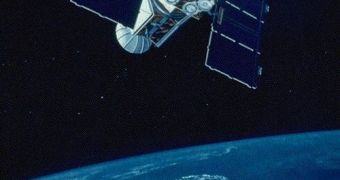In the aftermath of the February 10th disaster, when two intact satellites collided over Siberia, space experts from several countries have started to talk about the condition of Earth's orbit, where now thousands of small objects revolve around our planet. Out of these, only 5 percent are operational satellites, but they are providing the world with crucial data, while at the same time navigating a maze filled with space junk from previous missions. Under these circumstances, it was only a matter of time until disaster struck, space agency experts say.
“While it took 50 years for Earth orbit to become sufficiently congested that we would expect such an event, it will take only about 10 years before another can be expected,” former NASA orbital debris expert, Don Kesslera, explains. “The probability of impact has been steadily going up and at some periods at an increasing rate. We're definitely in one of those periods and I expect to see an increase in the coming years,” John Higginbotham, who is the chief executive of Integral Systems of Lanham, Maryland, a provider of satellite control software, adds.
The Air Force has currently a service that monitors debris around the Earth. But, while it does trace more than 19,000 objects, some as small as a baseball, its software and computers cannot possibly predict all collision scenarios, so as to avoid such catastrophes from happening again. The Russian satellite Cosmos 2251, weighing 1,984 pounds (900 kilograms), collided with the American Iridium, weighing 1,234 pounds (560 kilograms), on the 10th of February, at 11:55 a.m. EST. The accident sent a large amount of debris into orbit, and at one point there were even concerns about the safety of the International Space Station. Last week, they proved to be unfounded.
However, the issue of uncontrolled debris remains, and the little metallic bodies pose a significant security risk to all the other satellites still orbiting Earth. A collision could occur at any moment, which would generate more debris in turn, while crippling our abilities to keep in touch with each other and to access commodities we now take for granted, such as cell phones and the Internet.

 14 DAY TRIAL //
14 DAY TRIAL //